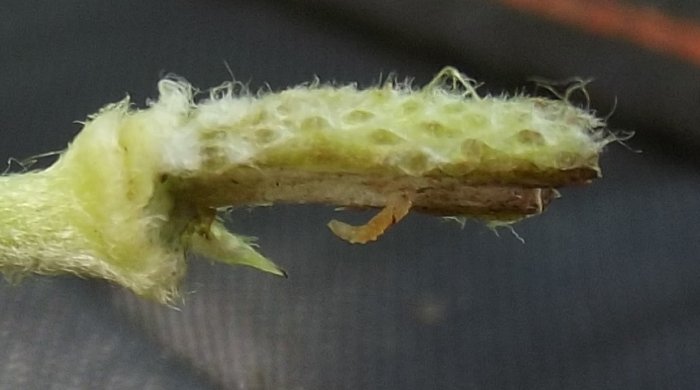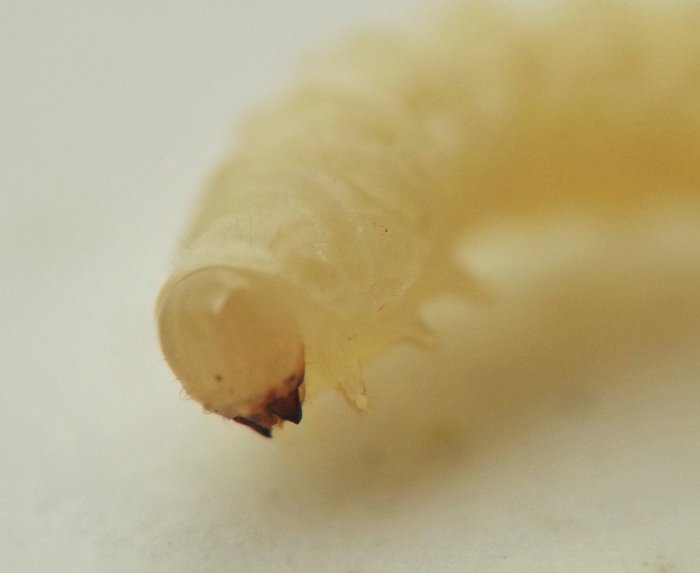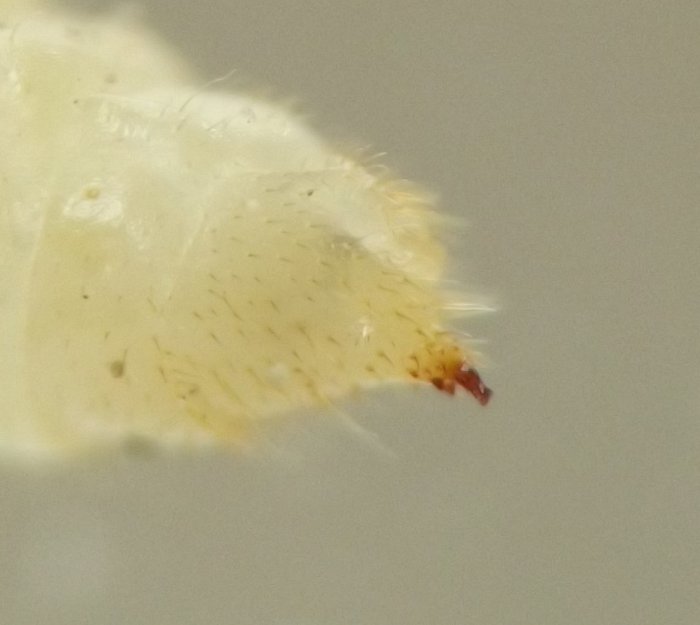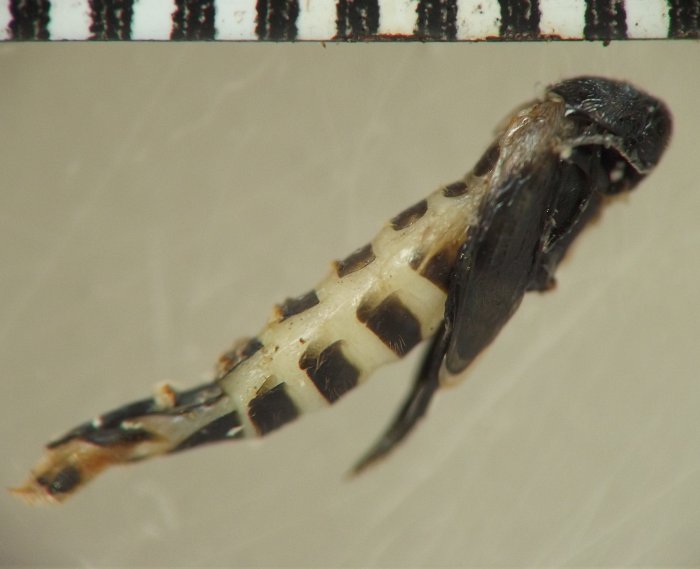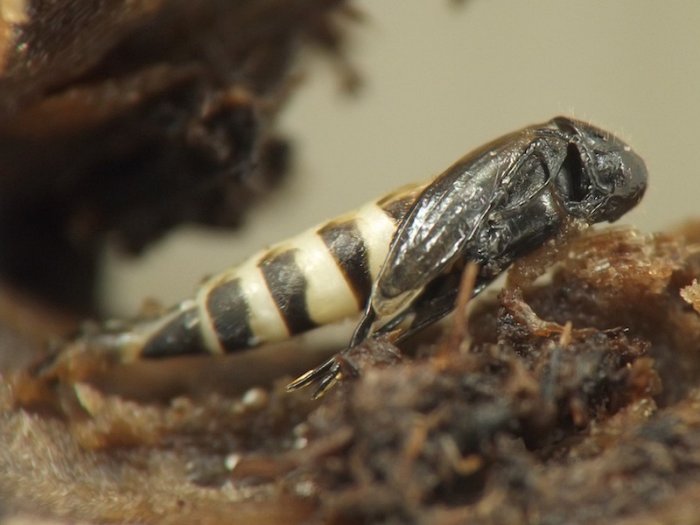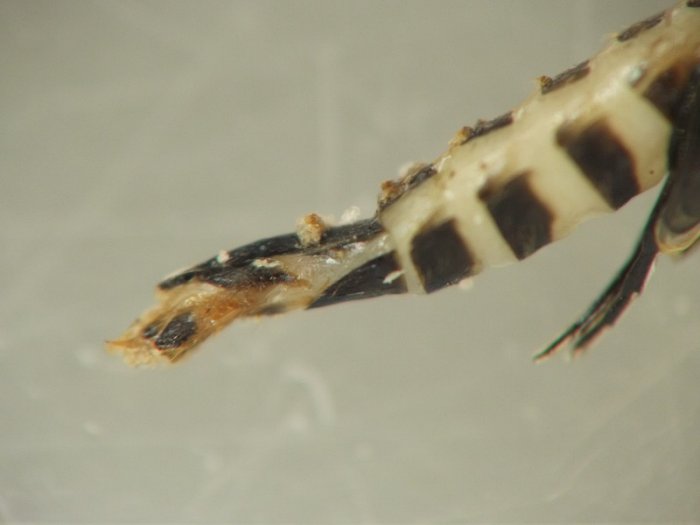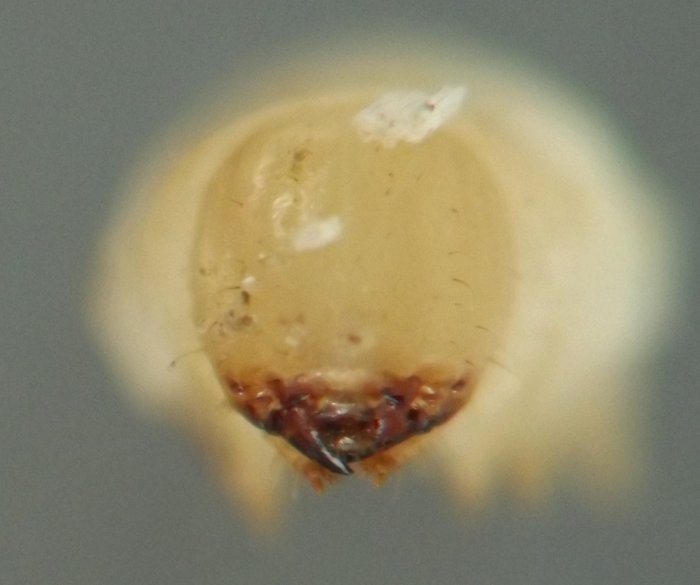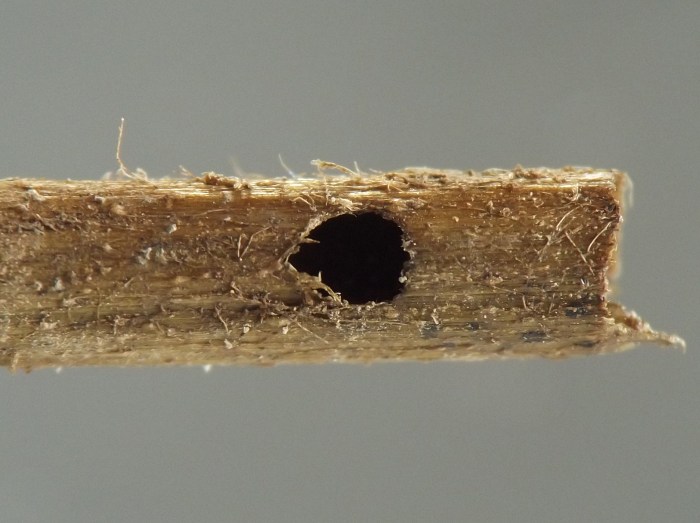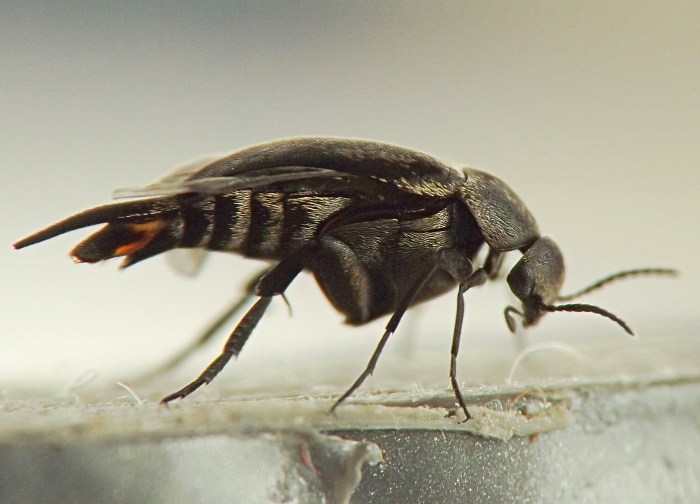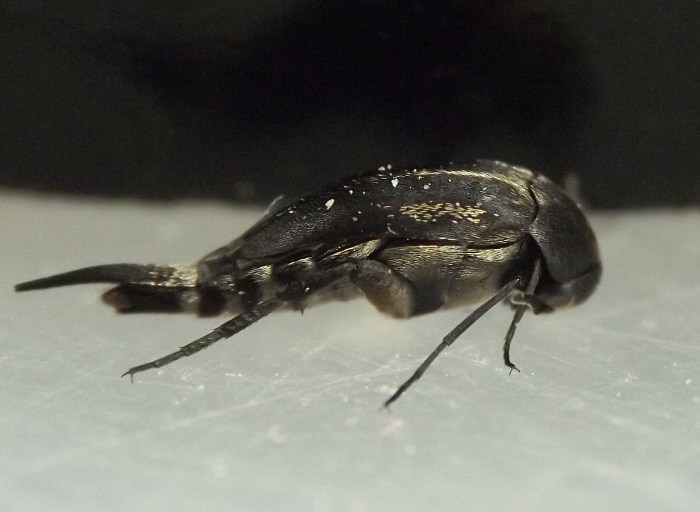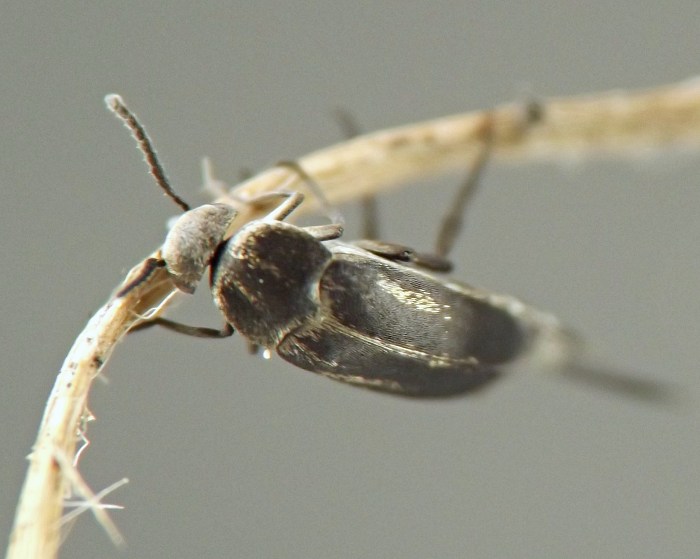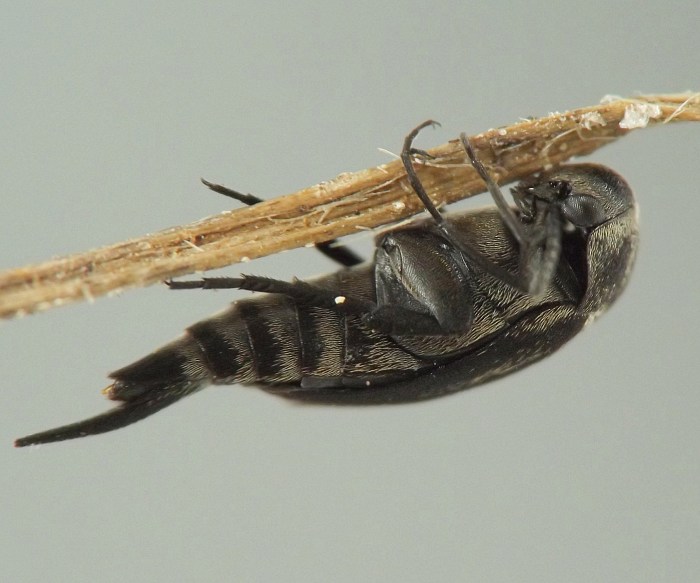Stem borer (Coleoptera: Mordellidae) in Anemone [0057]
| Order | Coleoptera |
|---|---|
| Family | Mordellidae[T,L,P,A] |
| Lower taxon | cf. Mordellistena incommunis |
| No. spp. involved | One confirmed |
| Feeding mode | Stem borer |
| Host plant | Thimbleweed, Anemone cylindrica or A. virginiana (Ranunculaceae) |
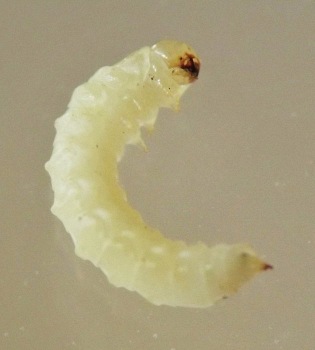
In the current study, this species was first noted feeding in the stems of a species of thimbleweed (either Anemone cylindrica or A. virginiana) growing on a steep bluff prairie remnant. At that location, a typical larva of this species was observed to begin its feeding by tunneling in the elongate receptacle forming the core of the thimble-like seedhead. The receptacle would at least sometimes be almost entirely hollowed out and filled with frass before the larva would exit the receptacle and tunnel into the stalk of the seedhead (the peduncle). The larva's act of hollowing out the receptacle and then migrating into the peduncle sometimes weakened the juncture between peduncle and receptacle, so that the seedheads of affected plants could be broken off easily if grasped between a person's thumb and forefinger and twisted gently. Tunneling down through the peduncle, larvae eventually arrived in the main stem of the plant. Further feeding occurred here, and larvae continued moving downward through the main stem until finally reaching the base of the plant, which is where overwintering took place. An individual collected as a larva in April pupated shortly thereafter but failed to emerge as an adult.
During autumn, Mordellidae larvae that have mostly completed their feeding in stems of thimbleweed have also been observed in the current study to cut the main stem of the plant from the inside at a point roughly 10-20cm above ground level, causing the upper part of the plant to break off and leaving behind a lower stem "stump" with the larva inside. Such stumps have hollow interiors as a result of larval tunneling, but the open end created when the upper stem breaks off is sealed with a cap of frass, allowing the larva to pass the winter safely in the stump. The author has noted mordellid-created stem stumps in thimbleweed plants growing both in open prairie remnants and in well-wooded habitats, but the woodland-dwelling plants had not had their seedhead receptacles hollowed out.
Adults were reared from overwintered larvae in spring 2024. The silvery-gold markings on the elytra appear consistent with Mordellistena incommunis, when compared to images and a comment at BugGuide.net (e.g., Eiseman (2011) & Moyer (2012)). Upon emergence from the stem, one reared adult left a roundish exit hole in the stem stump just below the top end of the stump.
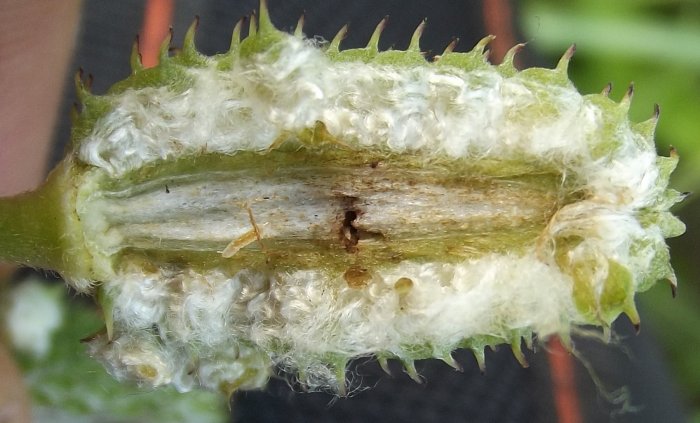
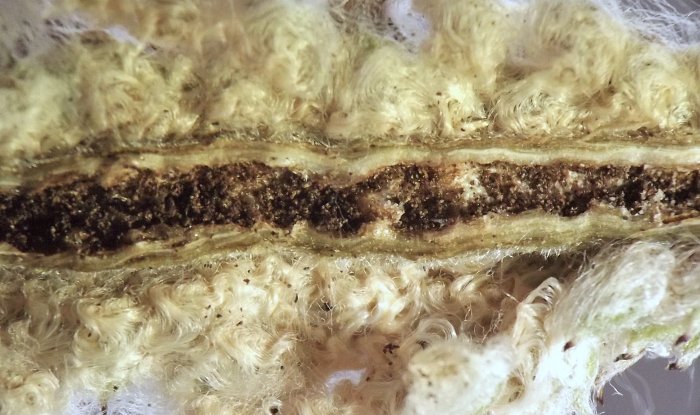




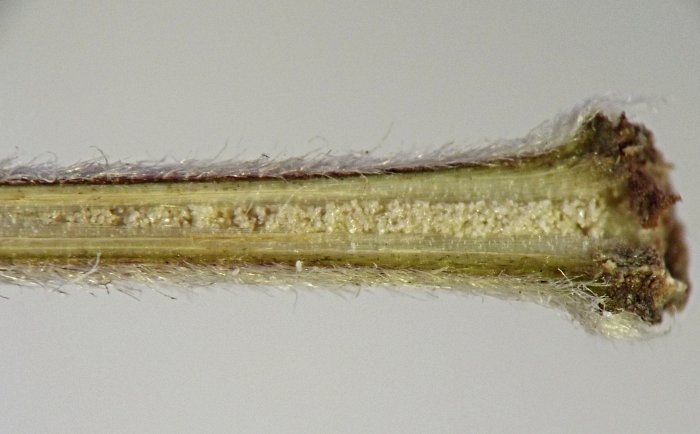
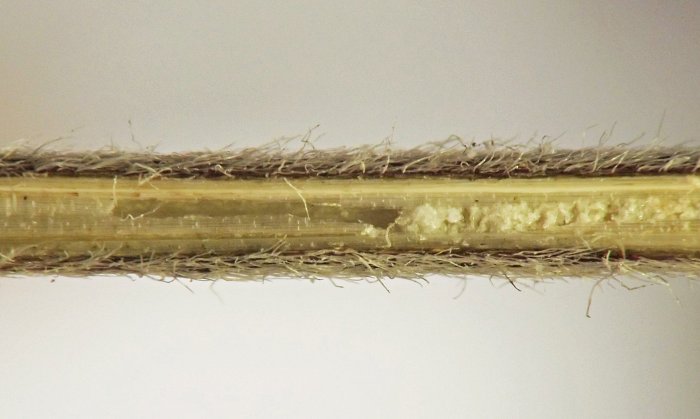
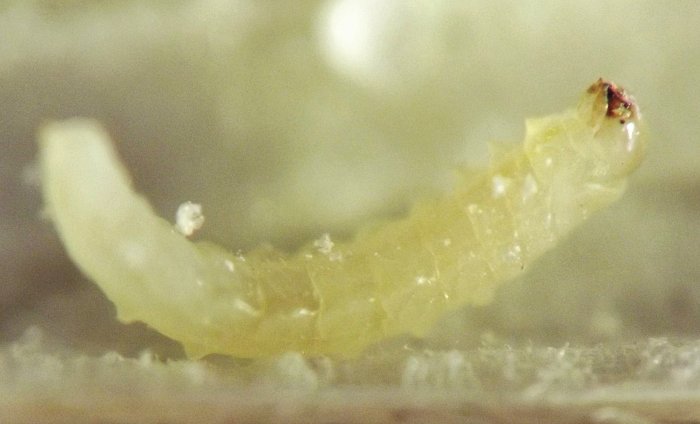
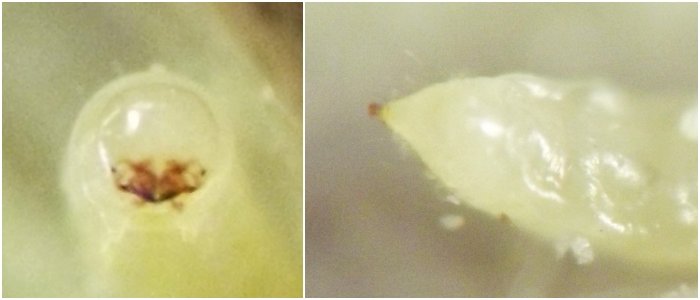
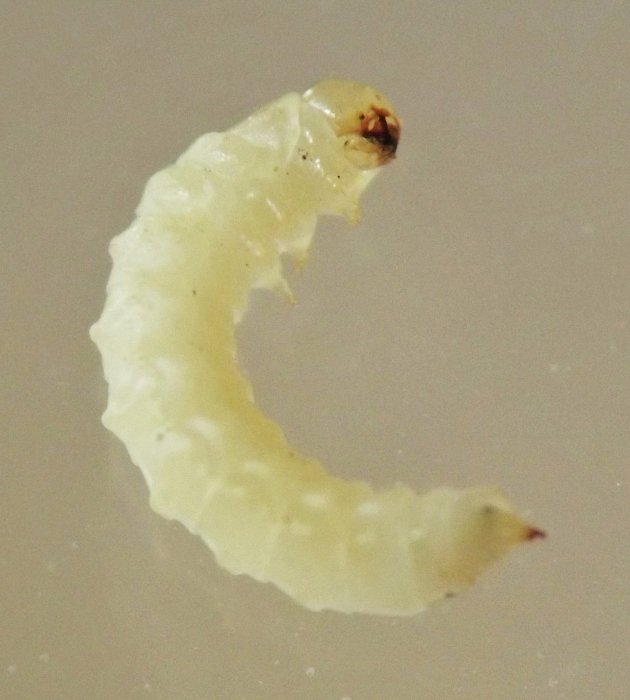
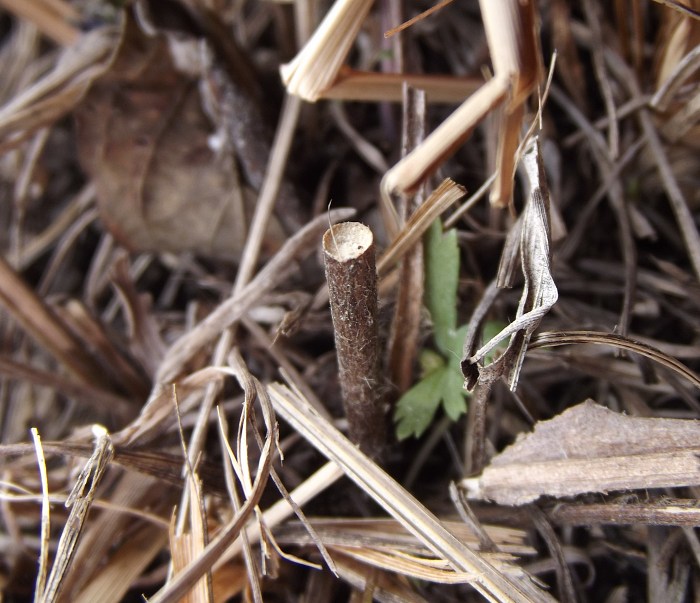
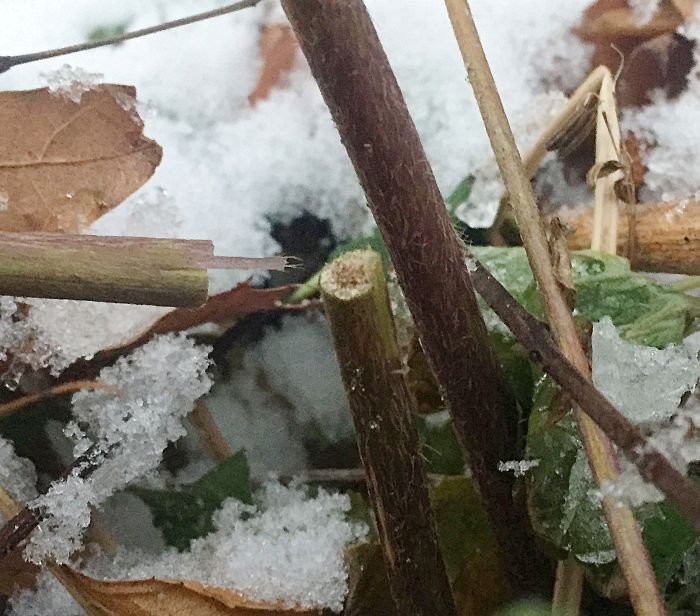
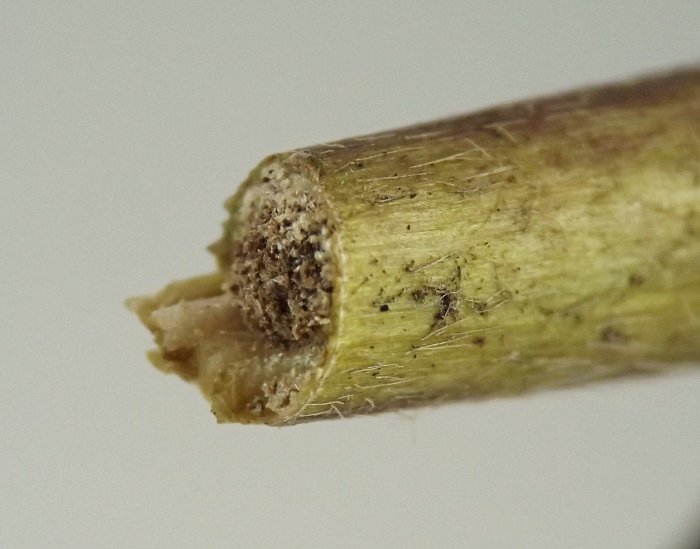
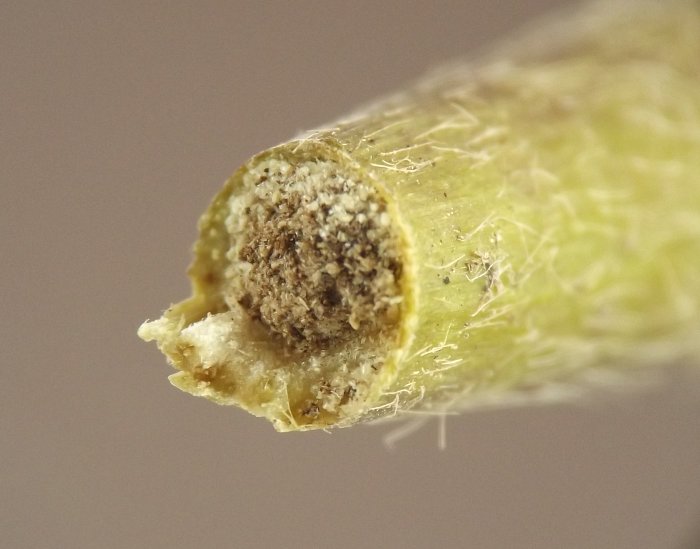
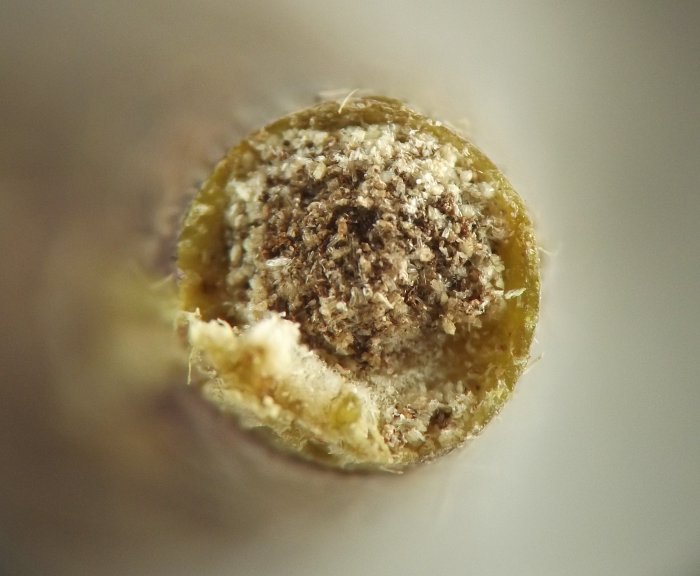
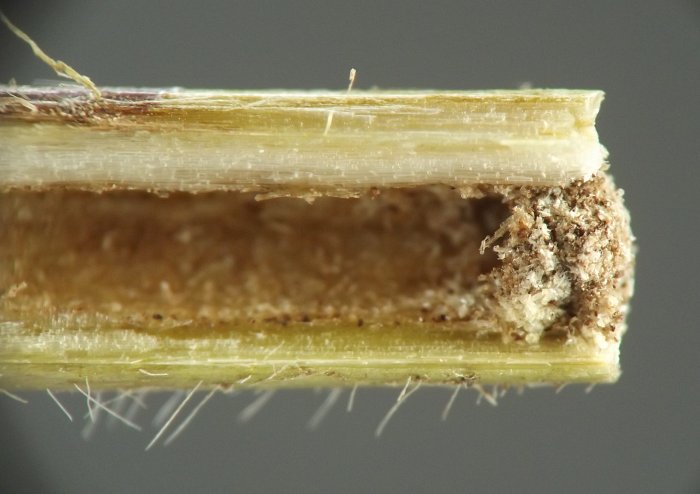
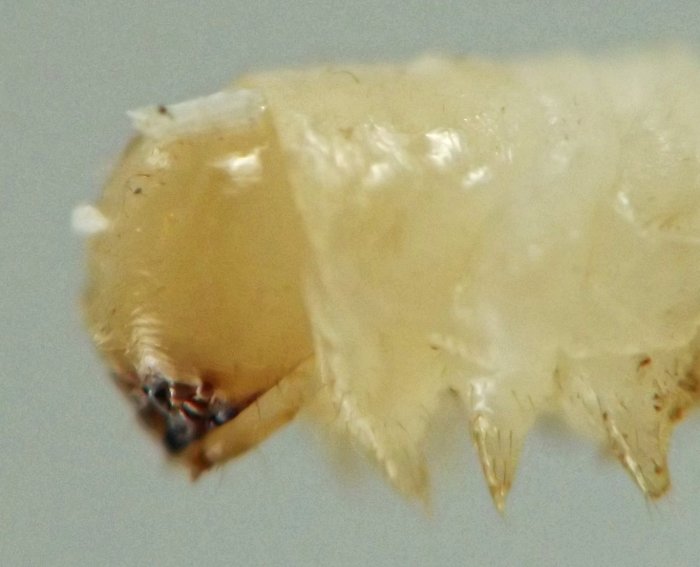
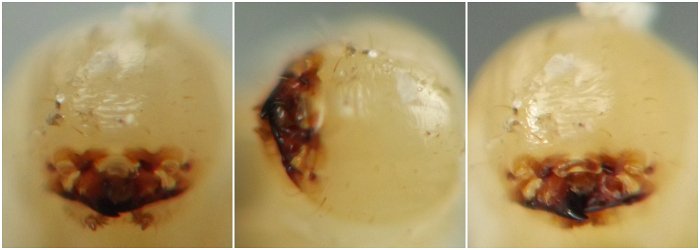
Specimen data for images
Coll. 07/07/17, photos same day (01-02); coll. 07/29/17, photos same day (03-08); coll. 08/14/16, photos same day (09-11); coll. as larva 04/26/18 and photographed on 04/28/18 (12-14), pupa photographed on 05/26/18 (15-17); coll. 11/20/22, photos same day (18-25, 27); field photo taken 04/26/18 (26); coll. 12/22/23, adult em. 04/08/24, photos of adult and exit hole in stem stump on adult's emergence day (28-32).
References
Eiseman, C.S. 2011. Mordellid. Contributor post on BugGuide.net. Retrieved December 3, 2024 from https://bugguide.net/node/view/598354.
Moyer, T. 2012. Comment on contributor post at BugGuide.net. Retrieved December 3, 2024 from https://bugguide.net/node/view/598354.
Plant anatomy terms from: Tenaglia, D. and Missouri Native Plant Society. 2023. Anemone virginiana L., thimbleweed. In Missouri Plants [website]. Retrieved November 8, 2023 from https://www.missouriplants.com/Anemone_virginiana_page.html.
Page created 11/07/23. Last update: 12/03/24



